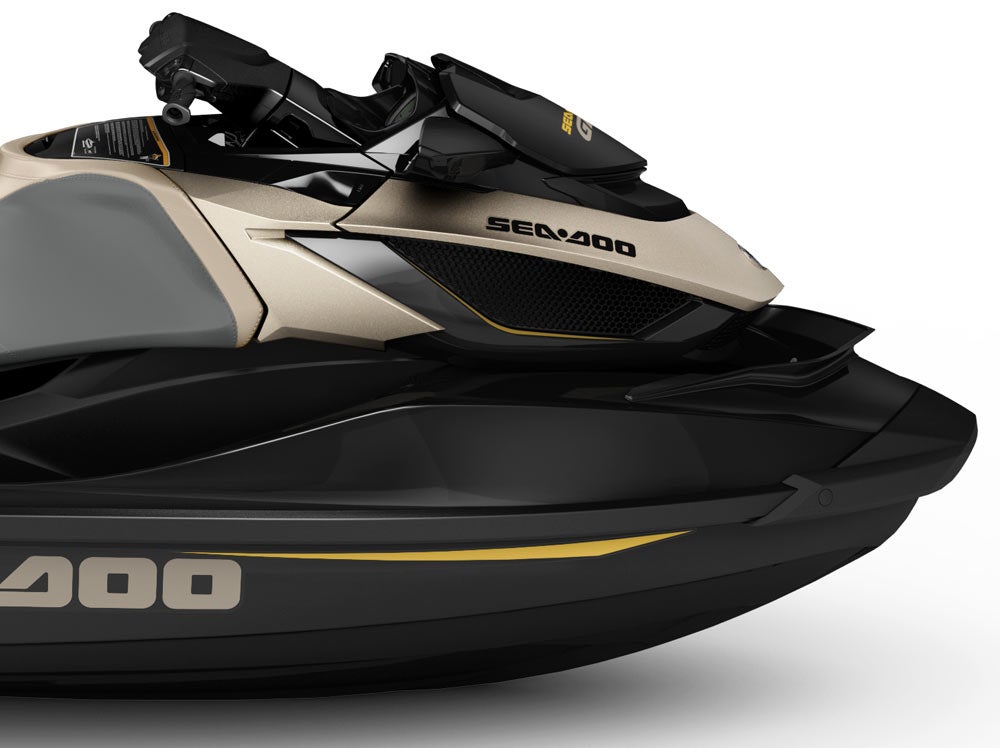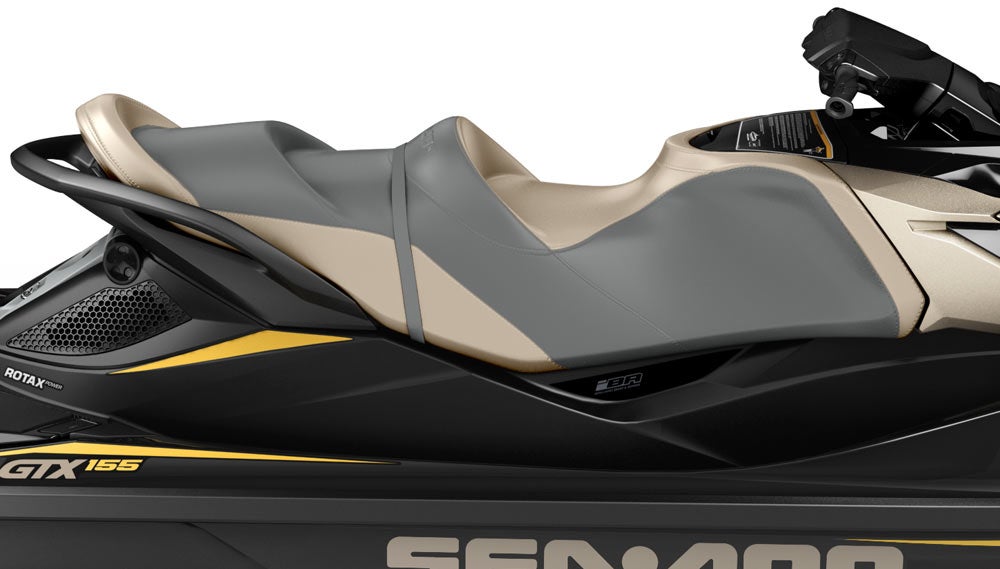2017 Sea-Doo GTX S 155 Review
A more affordable suspension-equipped PWC
For many years, Sea-Doo has offered a suspension model, a craft that essentially separates the hull and “rider pod” to provide a more cushioned ride in rough water. For the majority of those years, the craft that featured the technology used a trick electronic version…and was one of the most expensive craft on the market. The Sea-Doo GTX S 155 resides at the lower end of the spectrum. Using the smallest engine in the GTX line – and a less-expensive manual version of that suspension – the craft comes in at a competitive $13,599.
Find riding in rough water a pain in the back? Maybe it’s time to soften the blows.
Pieces and Parts
The primary pieces that make up the suspension puzzle are the hull and the portion of the deck that carries the saddle, footwells and handlebars. These two pieces are connected via a suspension arm at each end, and a centrally located spring and shock absorber. Hit a wave, or just hop up and down in the footwells, and you can feel the upper portion move within the lower, traveling about six inches to absorb and soften the jolt. Going the manual route makes suspension far more cost effective. Owners can also set the stiffness of the spring (to produce a stiffer suspension and avoid the upper bottoming out in large waves, for example) by simply tightening the spring bolt exposed below the saddle.
In use, suspension certainly works. Don’t expect the perfect ride. You’ll still bump over the waves. Those bumps, however, are quite soft and slowed, rather than the rapid, harsh jolt riders normally encounter as the hull smacks across a large wave or wake. For years I’ve argued it’s good for the driver, but best for the passengers, who can’t always anticipate wakes in advance and lack the handlebars to hang onto.
Power…Without the Supercharger Price
Manual suspension lowers the price of the Sea-Doo GTX S 155, but so too does the 155hp version of the Rotax 4-TEC, a powerplant that foregoes a supercharger yet still delivers respectable performance — and consumes less fuel. Acceleration is more than adequate for watersports tow duties; top speed falls in the neighborhood of 55-56 mph. Enhance that performance through use of the craft’s electronic trim, dropping the bow to improve acceleration and raising it to reduce wetted surface and achieve best top-end speeds. That trim can also adjust for load, or be used to gain towing power when pulling a skier from deep water.
It can also be tailored through Sea-Doo’s Intelligent Throttle Control. Two primary acceleration “modes” are available, Touring for everyday operation and Sport for those rides when you want the most potent acceleration. ECO mode can also be activated to produce the most fuel-efficient performance.
Familiar Feature List
Extras on the Sea-Doo GTX S 155 include Intelligent Brake & Reverse (iBR), Sea-Doo’s electronic control of a modified reverse bucket to provide rapid deceleration at speed, or forward/neutral/reverse-style handling at low speeds. iBR-equipped craft start in neutral at the dock or launch ramp. Switching in and out of these motions is intuitive, and keeps your hands on the handlebars at all times, as well as eyes on the water. Other features include an ErgoLock saddle, a touring style seat with recessed nooks and bolsters forward that cradle the inner thigh to allow the rider to grasp the craft with their legs, and take strain off the upper body in aggressive turns. Additional features include Sea-Doo’s familiar theft-prevention/speed-governing lanyards, tilt steering, and spring-loaded boarding step. The negative remains storage capacity. Due to the realities of the suspension, capacity is limited to 16.6 gallons.
Comparable models? No other brand offers suspension. Sea-Doo’s own GTX Limited S 260 remains a flagship model at $16,999. Yamaha’s FX HO is comparable in positioning and performance, sans suspension, at $13,199.
Get PersonalWatercraft.com in your Inbox!
Like PersonalWatercraft.com on Facebook
Comments
Most Popular

2025 Yamaha JetBlaster PRO 2-Up Review

Remembering the Sea-Doo XP

2024 Kawasaki Jet Ski STX 160X Review

Whatever Happened to the Wetbike?

2025 Yamaha JetBlaster Review

















 Your Privacy Choices
Your Privacy Choices